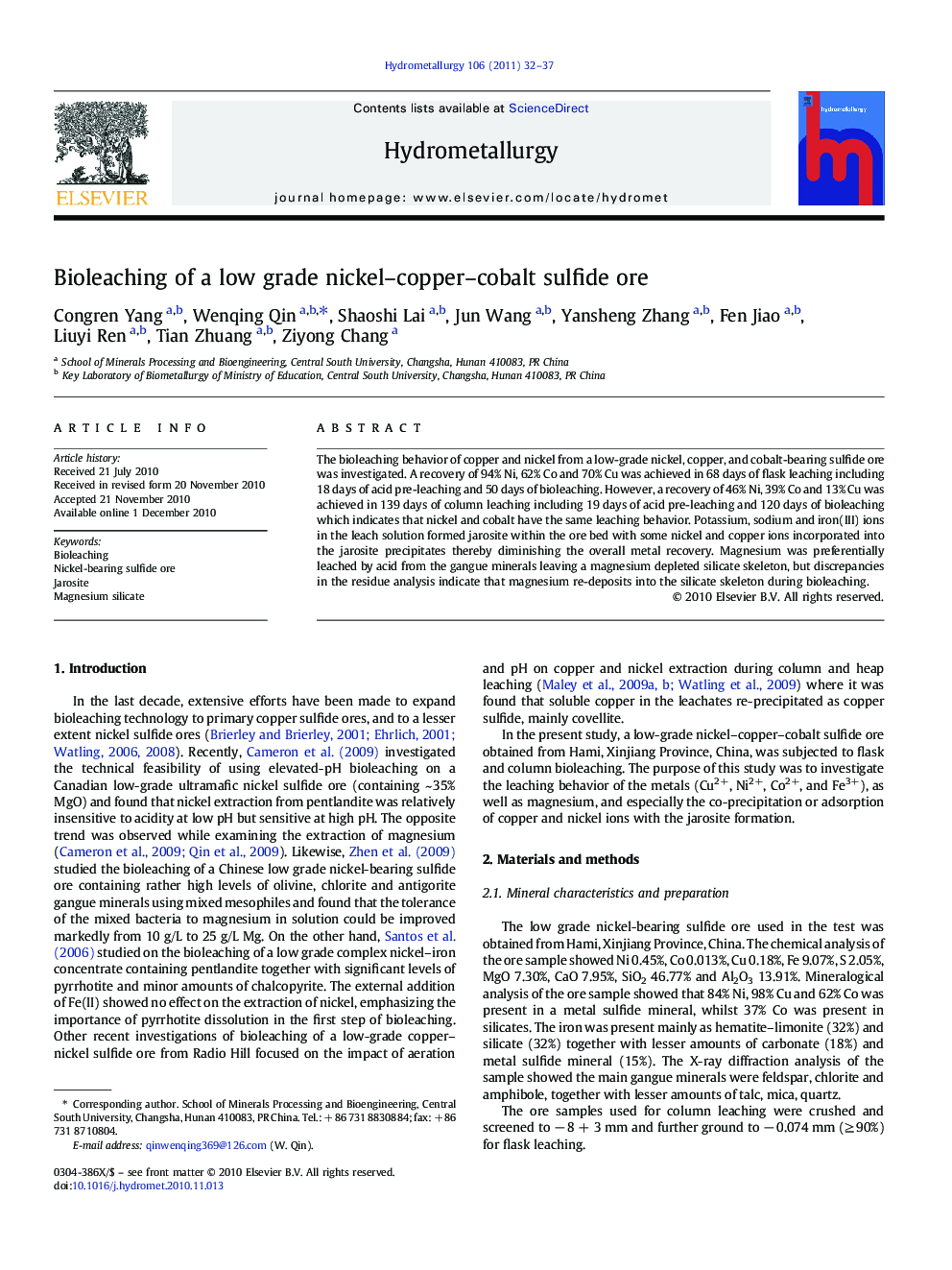| کد مقاله | کد نشریه | سال انتشار | مقاله انگلیسی | نسخه تمام متن |
|---|---|---|---|---|
| 212854 | 462070 | 2011 | 6 صفحه PDF | دانلود رایگان |

The bioleaching behavior of copper and nickel from a low-grade nickel, copper, and cobalt-bearing sulfide ore was investigated. A recovery of 94% Ni, 62% Co and 70% Cu was achieved in 68 days of flask leaching including 18 days of acid pre-leaching and 50 days of bioleaching. However, a recovery of 46% Ni, 39% Co and 13% Cu was achieved in 139 days of column leaching including 19 days of acid pre-leaching and 120 days of bioleaching which indicates that nickel and cobalt have the same leaching behavior. Potassium, sodium and iron(III) ions in the leach solution formed jarosite within the ore bed with some nickel and copper ions incorporated into the jarosite precipitates thereby diminishing the overall metal recovery. Magnesium was preferentially leached by acid from the gangue minerals leaving a magnesium depleted silicate skeleton, but discrepancies in the residue analysis indicate that magnesium re-deposits into the silicate skeleton during bioleaching.
Research Highlights
► Potassium, sodium and iron(III) ions in the leaching system formed jarosite within the ore bed.
► Some nickel and copper ions incorporated into the jarosite precipitate thereby diminishing the overall metal recovery.
► Mg2+ was preferentially leached from gangue minerals and then re-deposited into the remaining silicate skeleton.
Journal: Hydrometallurgy - Volume 106, Issues 1–2, February 2011, Pages 32–37